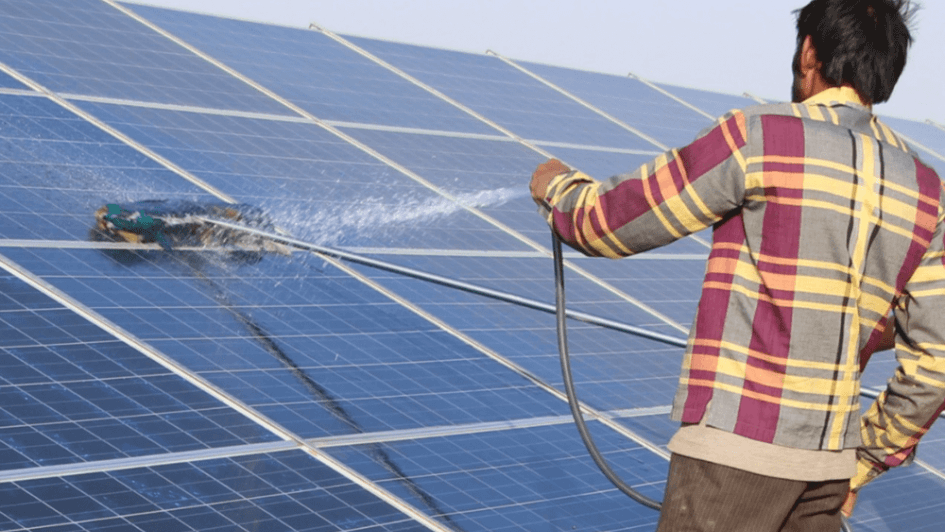Momentum is building as India moves towards meeting its clean energy targets. Recognizing the tremendous growth potential and opportunity to overhaul India’s energy sector, the Ministry of New & Renewable Energy convened policymakers, investors and key clean energy stakeholders at the World Renewable Energy Technology Congress in New Delhi this week to focus on accelerating the market and achieving India’s goals of installing 175 gigawatts (GW) of renewable power by 2022.
India’s Power Minister Piyush Goyal highlighted that India’s efforts on clean energy are a step toward addressing the challenges of climate change while providing universal energy access to all. According to Minister Goyal, with greater “decarbonization, decentralization and digitization” of energy, the world has the opportunity to “leave a better world for the children of tomorrow”. Technology innovation and redirecting investments to renewable energy can help India achieve economic development while reducing fossil fuel use.
According to the Indian government, achieving India’s solar target of 100 GW by 2022 would require at least $100 billion in investment over the next six years. An even a greater amount of financing is needed to achieve India’s 2030 Paris targets. Both, public and private capital, are needed to advance clean energy deployment in India’s cities and villages.
As part of a panel discussion on innovative financing, we highlighted the challenges and emerging solutions for ramping up clean energy in India. NRDC and our partners, the Council on Energy, Environment and Waterhave engaged with over 80 stakeholder discussions, including high-level government officials, banks, developers, and thought-leaders in India over the past year. There is strong need and support for developing a specialized green investment fund aimed to advance clean energy.
Based on extensive engagement with government and business leaders in India, one key solution that is becoming clear is creating a ring-fenced pool of patient capital that is dedicated to accelerating the flow of finance to underserved clean energy markets. As identified by stakeholders, one of the main solutions is a green investment fund (commonly known as blended financing models, such as green investments banks). A green fund would increase the availability of low-cost, long-term private financing, especially in clean energy market segments that are underserved today, such as rooftop solar, as well as market segments that are on the horizon in advancing clean energy. Green funds amplify the impact of limited government funds by using public funds as a financial lever to attract private investments for clean energy development.
Five key initial findings from stakeholders include:
- A green fund would be effective in serving as the focal point for innovative financing and could work with existing government entities to operationalize financing instruments (e.g., aggregation, warehousing, credit enhancement).
- A green fund that is a mission-driven entity would be effective in drawing in patient capital and would take on projects that are perceived as riskier and are underserved (rooftop solar, off-grid mini grids), in order to accelerate market transformation and stay ahead of the curve.
- A green fund focused on making public investment go further with blended financing from private investment in clean energy and crowding in domestic and international private capital would increase clean energy finance in India to achieve clean energy goals.
- The concept of dedicated funds with blended, public and private co-investment is working effectively in India, especially for infrastructure development, since commercial banks are not structured to move quickly unless some of the risk of early deals is taken on by entities with higher risk tolerance.
- A fund manager with deeper market knowledge could work with an existing government agency, such as IREDA (Indian Renewable Energy Development Agency) to build capacity and operationalize the fund.
Creating a green investment fund to channel public to finance innovative solutions can help India overcome a number of these challenges, especially for under-served technologies and geographies. The green investment fund model has been deployed in numerous countries around the world towards financing gaps for clean energy projects, often at the local level. They are publicly capitalized, domestically focused, specialized financial institutions specially established to crowd in private capital to investments in clean energy.
Green investment funds use the same tools and products that some development finance institutions use, including risk mitigation products, co-lending, co-investing, warehousing and securitization, and demonstration projects. Green investment funds have built a track record of success in mainstreaming a variety of new technologies, financial products, and business models, and crowding in private capital using financial innovation and sector expertise.
The key role for the green fund would be to help existing entities to be more effective and increase investment. The market does not need another lender. Rather, the market needs a dedicated entity that has the mandate to grow the market, the expertise to structure innovative transactions and the flexibility to cater to proven but underserved markets. It needs a fund with more patient capital and deeper clean energy finance expertise that leads market transformation. In addition to direct lending at lower rates, the green investment fund can offer financial products that help make commercial banks more comfortable with financing clean energy projects, such as partial credit guarantees or credit insurance.
To maintain the momentum of the renewable energy market, access to higher levels of financing are needed. A green investment fund can help leverage limited public funds to attract foreign investors by building confidence to bring in low-cost capital to develop innovative projects and help deliver the 175 GW target.
